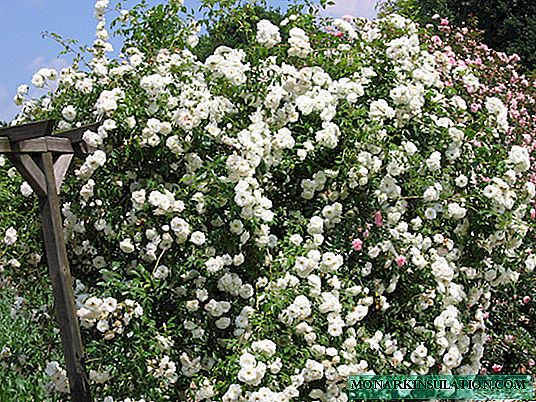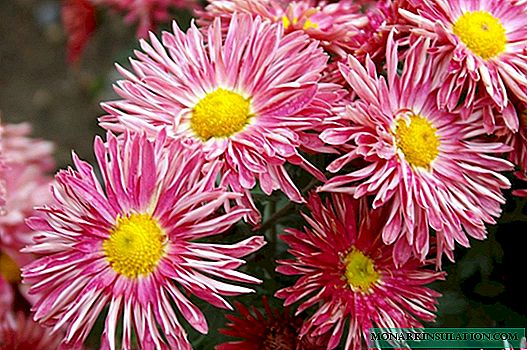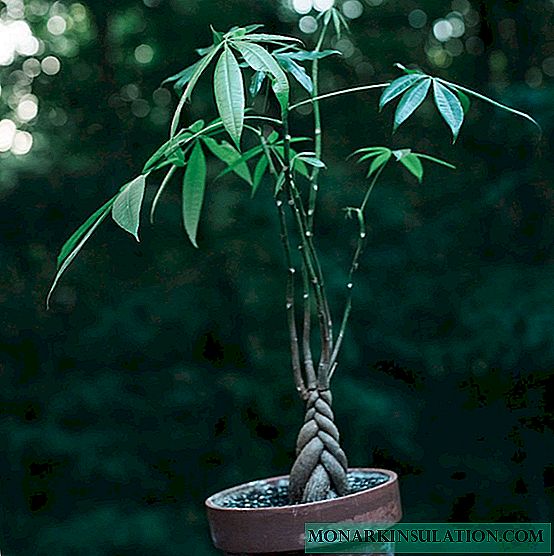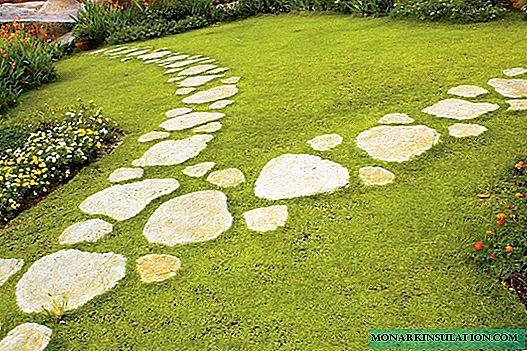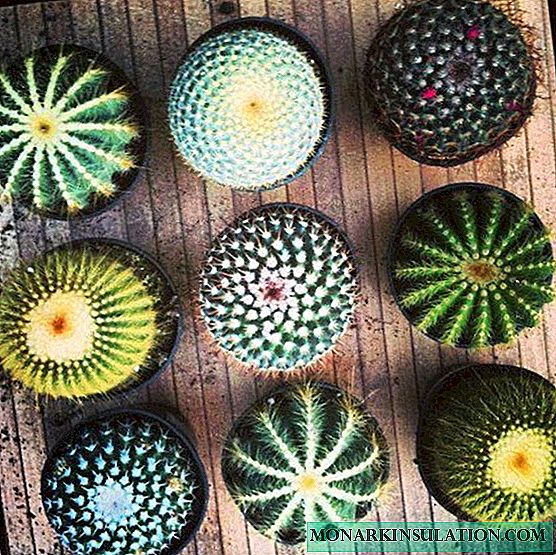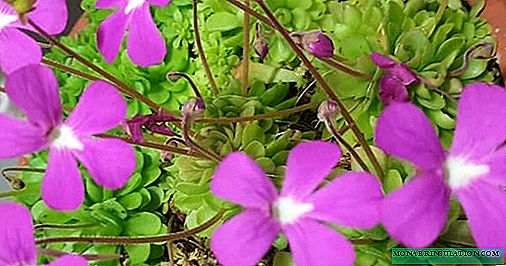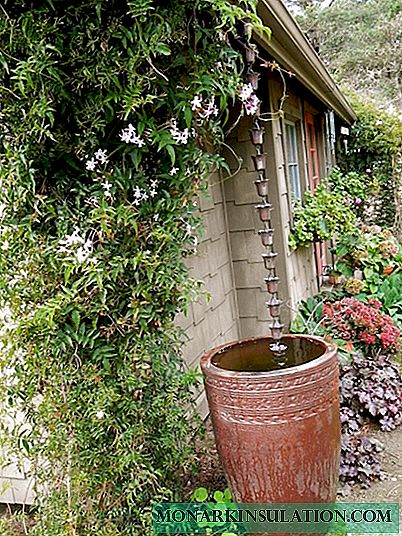
Many summer residents love to enjoy the murmur of water and create fountains and streams especially for this purpose. But there is an option much simpler - rain chains. True, you can listen to the melody of flowing jets only during rain, but often this is enough to relax. But there is a chance to save money on the gutters and replace them with an original, very rare decorative element in our area, which simultaneously collects water from the roof and demonstrates the beauty of its movement to everyone who is nearby.
Rain principle
It is not surprising that the invention of rain chains belongs to the Japanese, who are able to create centers of relaxation around themselves. In their culture, the contemplation of water is considered one of the most calming factors. Instead of the traditional drain, in which the flowing streams are completely invisible, the Japanese came up with rain chains. These are open-type constructions along which water moves in cascades, flowing from one tank to another.
Most often, containers are perforated decorative bottom pots in the form of a cone placed by a funnel up. In case of small rain, the jets go into the through hole from below, with large rain, they flow down from all the edges of the pot. Between themselves, the containers are fastened with a decorative chain, which is why the whole structure is called "kusari doi", which in Japanese means "rain chains".
The top of the structure is fixed on the cornice, directly under the place of water flow, and at the bottom the chain is securely fastened with an anchor to the ground or the load is tied and lowered to the bottom of the water intake (barrels or a specially dug up miniature pool where draining drops will be collected). This is necessary so that during strong gusts of wind the chain does not swing and does not hit the building.

An important element in the design of the rain chain is a beautiful catchment basin, to which the edge of the chain is fixed to protect it from wind
What climate is this design suitable for?
For all its originality, rain chains cause a lot of questions. The most frequent is how appropriate they are in a cold climate with harsh winters, because if snow accumulates there, then after the slightest thaw, it can turn into a block of ice. And such an ice sculpture weighs a lot. Would she break the curtain rod?

Drops of moisture look beautiful on a metal chain with ornate patterns, and in winter it takes the form of a luxurious ice pillar
In fact, it all depends on the choice of the shape of the rain chain. In Japan, where the climate is mild, the design most often uses many identical containers, but in the northern countries the form is somewhat different. For example, in Norway, where a similar element of decor is adored, kusari doi rarely uses pots. Usually they hang the original large chain, with convolutions and ornate patterns, which in itself is a masterpiece of blacksmith art. Water flows down it no less beautifully, resembling a murmuring stream, but in winter there is nothing to get stuck on. The frame only slightly icy, covered with icicles and frozen drops, which looks unusual and very attractive.
As you can see, rain chains can be hung in any climate, choosing a design taking into account the severity of winter.

So that in the winter on the rain chain does not build up a lot of ice, you can choose a model from large links without the use of tanks
The most original forms of Kusari Doi
To find on sale the shape and color of the rain chain that would meet the design of the site is rather difficult, since in our country this decoration element is still rare. Most often, cone-shaped standard pots are offered without claims to high art. Handmade copper models are very expensive. One thing remains: to create a masterpiece by ourselves. And for many summer residents this turns out quite well. Consider the most interesting forms of rain chains that you can make yourself.

The most popular rain chain model is the design of metal copper pots resembling flower pots, as it looks organically in any landscape
The design of teapots or baby watering cans
From old kettles or ordinary plastic watering cans, you can build an original chain for a country style or any of the village styles. The basis on which the whole structure will be held should be a decorative chain. It is easy to find in any flower shop (used as a fence for flower beds or paths).
Kettles or watering cans are suspended from it at an equal distance so that the spouts fall exactly above the water collection hole in the downstream container. Then water will fill the kettle until it starts to flow out of the spout. And from there - to the next tank. And so - until it reaches the lower teapot of the chain. Place the last spout (lower tank) over the barrel or groove of the storm sewer.

When creating a rain chain from dummies, it is important to correctly fix the containers so that water flows from the top spouts exactly into the hole of the bottom
Tea Pair Model
A good option for the rain chain for the veranda or other small structure can be the shape of a tea pair. To do this, you will need a metal service, like those that were made in the old days from copper, iron, etc.
- With the beginning of the construction (i.e., the top), make the kettle by tying it with the handle up, nose down.
- Near the handle of the kettle, drill a hole on the body through which water will enter the container and drain through the spout further.
- Glue the plates and cups in pairs by cold welding.
- Drill a through hole in each tea pair, which should be slightly larger than the size of the chain links. This is necessary to freely pass the tea pair through the entire chain and fix it in place.
- Weld a small hook inside each cup that will fix the tea pair on a chain-base.
- Hang ready-made items at regular intervals in the chain.
Now you can literally "serve tea": fill the top kettle with water from a hose to see how beautiful it will flow from one cup to another.

If the house has antique tea sets made of copper or other metals that have not been used for their intended purpose for a long time, turn them into a rain chain
Galvanized bucket rain chain
A simple but durable option is the design of small galvanized buckets. They are brilliant, effective, and perfectly combined with a metal drainage system. The chains with the volume of buckets up to 3 liters look most advantageous.

In order for the rain chain made of galvanized buckets to look stylish, all additional elements (chain, hooks, water intake) must also be shiny and metallic
The principle of their installation is as follows:
- The required number of buckets is calculated so that the distance between them is 3-5 chain links.
- Drill a hole in the bottom of each tank through which the base chain will freely pass.
- All nicks in the drilled hole are cleaned with a file.
- A metal hook in the form of the letter S is attached to each handle of the bucket with pliers, for which you will hang the container on the chain frame.
- Bind the base chain to the cornice.
- Pass each bucket through it and fix it on the links with hooks, trying to maintain the same distance between the elements.
- Fasten a weights or a couple of large nuts at the lower end of the chain and hide them at the bottom of a large container to collect water. In this situation, a 15-liter galvanized bucket or a metal 40-liter flask made of stainless steel will look good.

The rain chain from small buckets looks good on small country houses and porches built in the style of a rustic style
Chain options without tanks
To exclude the possibility of ice freezing on the drain in cold areas - create a rain chain without tanks. There may be several options for decorating the base chain:
- Plastic grapes(usually they are bought to decorate the kitchen or dining room). Tie them in bunches, and throughout the year your gutter will resemble a vine.
- Metal leaves. They are cut out of copper, since it has the property of overflowing and giving different shades of bronze-brown tones, which resembles the color of autumn foliage. Be sure to cut through each leaf of the vein-void to increase the degree of water permeability along the chain. Leaves are fixed on a chain-based groups in groups of 3-4.
- Bright balls. The chain of large balls looks stylish and rich, especially if they have a gold-plated or metallized shade. You need to look for such balls in the department of Christmas toys, and after the holidays, when they depreciate and cost several times less. The balls are suspended in a cascade, to each link in the chain - 2 pieces from opposite sides.
- Umbrellas and fountains. The role of umbrellas can play the bottoms of plastic bottles. They have a relief, petal-like shape. The bottom of the bottle is cut off, leaving 7-10 cm of height, and a hole is made in the bottom with a metal hot object. The prepared elements are threaded into the chain upside down, fixing each element with hooks fixed on three sides of the umbrella. To make a fountain, you need to cut off only the top of the bottle, and cut the rest, almost to the bottom, into thin strips. Holes are made as described above, but the elements are not fixed upside down, but downward, so that the strips are beautifully bent by an arc.

It is difficult to linger on cascading metal leaves, petals and similar forms, therefore in winter they rarely overgrow with ice

If you want to decorate the veranda in the playground with rain chains, try building original and fun shapes from plastic bottles
Any owner can invent his own image of the rain chain. The main thing is to have a little imagination and a desire to make your site unique.

